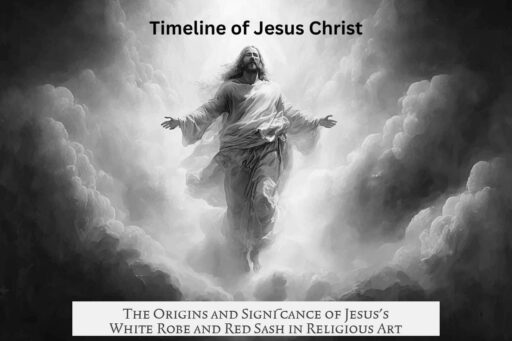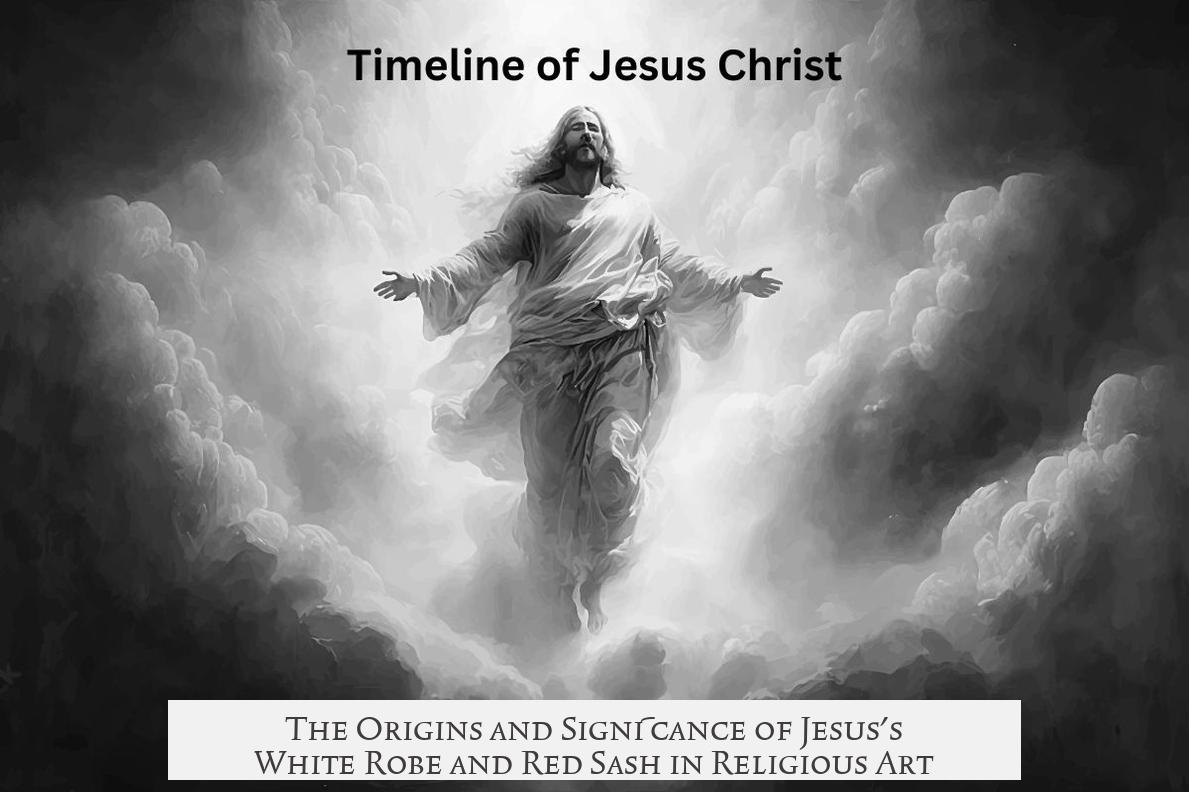The depiction of Jesus wearing a white robe with a red sash originates from biblical and symbolic traditions tied to his identity and mission. The white robe reflects purity and divine radiance, linked directly to the Gospel of Mark’s account of Jesus’s transfiguration, where his clothes become dazzlingly white. The red sash symbolizes the blood Jesus shed on the cross, a key element of Christian salvation theology. Together, these colors express deep spiritual meanings rather than just artistic choices.
The white robe comes from Mark 9:2-3, describing Jesus’s transfiguration before Peter, James, and John. At this moment, Jesus’s clothing becomes “dazzling white, whiter than anyone in the world could bleach them,” which has made white a symbol of holiness, purity, and divine light in Christian art and tradition. This visual device represents Jesus’s divine nature shining through his human form.
The red sash is linked to the sacrifice of Jesus. Red in Christian symbolism is often understood as the blood Jesus shed for humanity’s sins. It also connects to Revelations 19:13, where Jesus appears “dressed in a robe dipped in blood,” emphasizing his role as a suffering savior and divine king. Historically, red dye was costly and associated with royalty, amplifying the imagery of Jesus as both king and redeemer.
When combined, the white robe and red sash visually communicate a theological message: the purity and holiness of Jesus and the sacrifice that cleanses humanity. This color pairing has been used in Christian art for centuries to show the dual aspects of Christ’s nature–sinless and sacrificial.
- White robe: symbolizes purity, divine light, and the transfiguration event.
- Red sash: symbolizes Jesus’s blood, sacrifice, and royal status.
- Combined colors: express salvation, holiness, and divine authority.
Over time, this depiction has become a standard artistic representation with deep roots in scripture and early Christian tradition. Its original meanings remain significant, even if popular awareness of symbolism has faded.
Unwrapping the Origins of Jesus’s White Robe and Red Sash: What’s the Real Story?
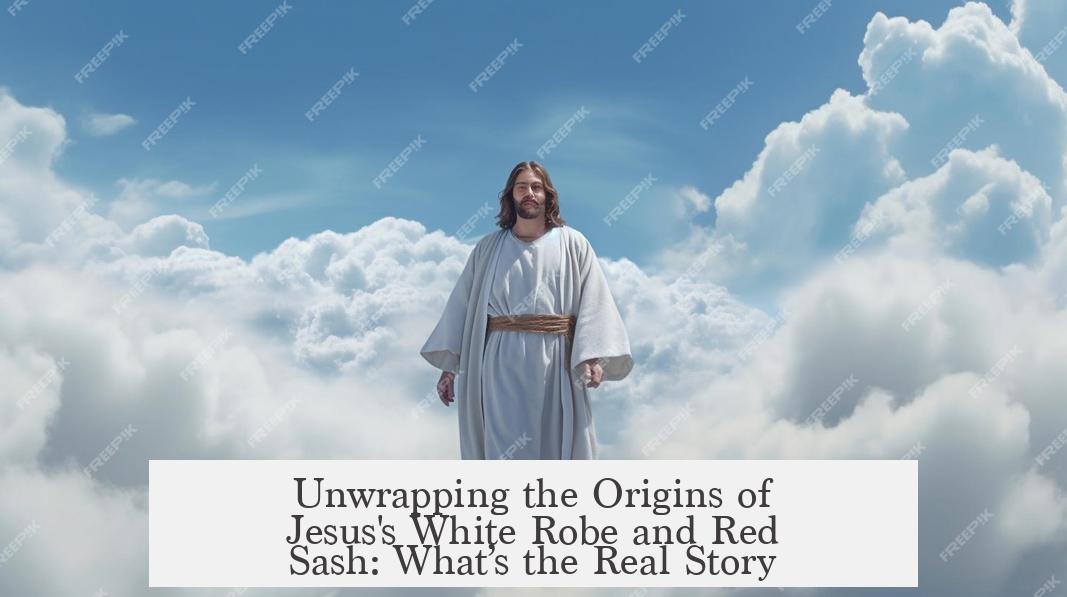
What is the origin of Jesus’s depiction wearing a white robe or gown with a red sash? Did that mean something way back when, a sign whose significance has shifted or been lost? Well, the answer is a hearty mix of deep symbolism, historical context, and evolving tradition that still speaks volumes today. So, buckle up for a journey through biblical tales, dye-making mysteries, and why those colors matter even now.
Let’s start at the very beginning. The image of Jesus clad in a white robe with a red sash isn’t just a random artistic flair. It’s a powerful visual shorthand with layers of meaning tied to Christian theology and history.
The White Robe: Purity, Light, and a Flash of Divine Radiance
The dazzling white robe comes straight from the New Testament, specifically Mark 9:2-3, where Jesus undergoes the Transfiguration. Imagine Peter, James, and John trekking up a high mountain, expecting a holy scene but then witnessing Jesus’s clothes blaze “whiter than anyone in the world could bleach them.”
This white garment represents more than just a fancy outfit. White traditionally symbolizes light and purity. It’s as if Jesus was wearing divine spotlight gear, signaling his holy nature and connection to God. The Transfiguration itself is crucial because it shows Jesus in a moment of divine brilliance, flanked by Moses and Elijah, symbols of the Law and the Prophets. So, the white robe isn’t just a costume; it’s a beacon of spiritual purity, divine presence, and heavenly authority.
And if you’ve ever wondered why Christian brides wear white, that tradition nods to the same symbolism—purity and light. Queen Victoria popularized white wedding dresses in the 19th century, but the association of white with purity has much older, biblical roots.
The Red Sash: Blood, Sacrifice, and a Royalty Statement
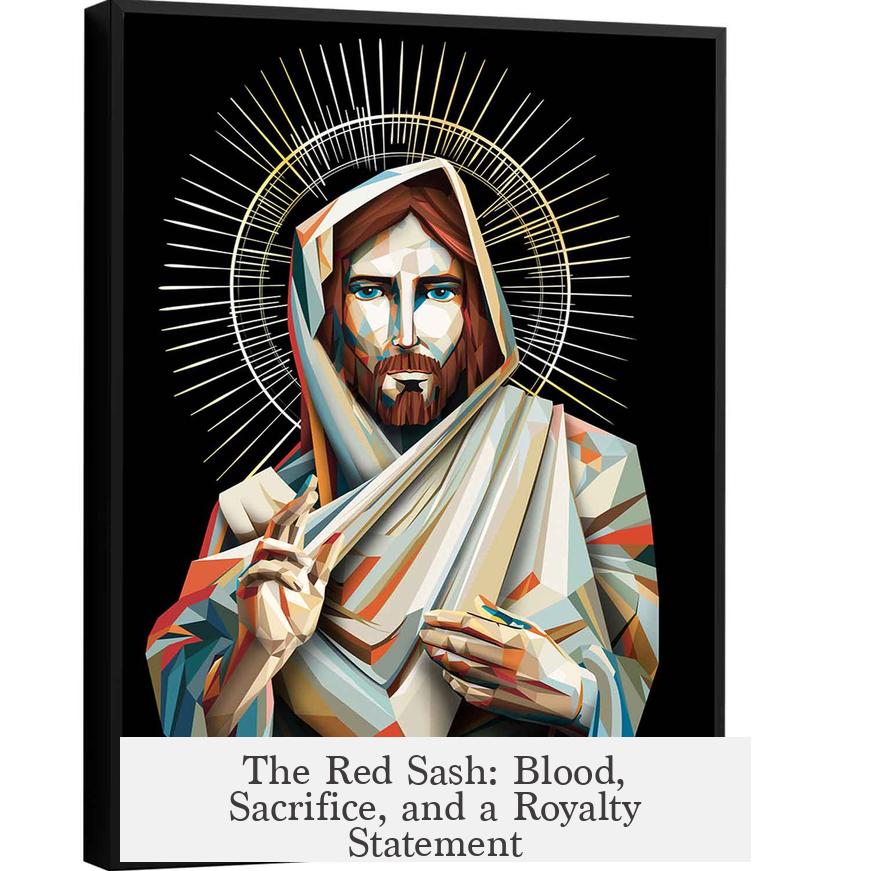
Now, onto that eye-catching red sash. This isn’t just a splash of color to brighten the scene. The red represents the blood Jesus shed on the cross to save humanity from sin. This connection is vivid in the imagery from Revelations 19:13, where Jesus is described as returning “dressed in a robe dipped in blood,” which is a striking and memorable metaphor for his sacrifice.
The symbolism of red goes beyond the theological. Back in the day, red dye wasn’t cheap. It was rare, expensive, and closely linked with royalty and power. So when artists depict Jesus with a red sash, they’re also nudging us to see him as a King—not just any king, but one whose kingdom is founded on sacrifice and salvation.
Think about this: the red sash is a paradoxical crown—it’s regal but stained with blood. That detail enriches the narrative of Jesus as both a suffering servant and a divine ruler.
Combined Meaning: A Visual Feast of Theology
Put the white robe and the red sash together, and you get a powerful dual message. It’s like wearing two badges of honor—one for purity and divine light, the other for sacrificial love and authority.
Together, they symbolize Jesus’s purity as the Son of God, the light of God shining in the world, and his bloody sacrifice to cleanse humanity from sin. It’s a neat theological package that sums up core Christian beliefs in one memorable image.
This dual symbolism also clarifies a common question: why not just show Jesus in simple clothes? The imagery intentionally conveys spiritual truths that words alone might struggle to capture.
Did the Meaning Shift or Get Lost Over Time?
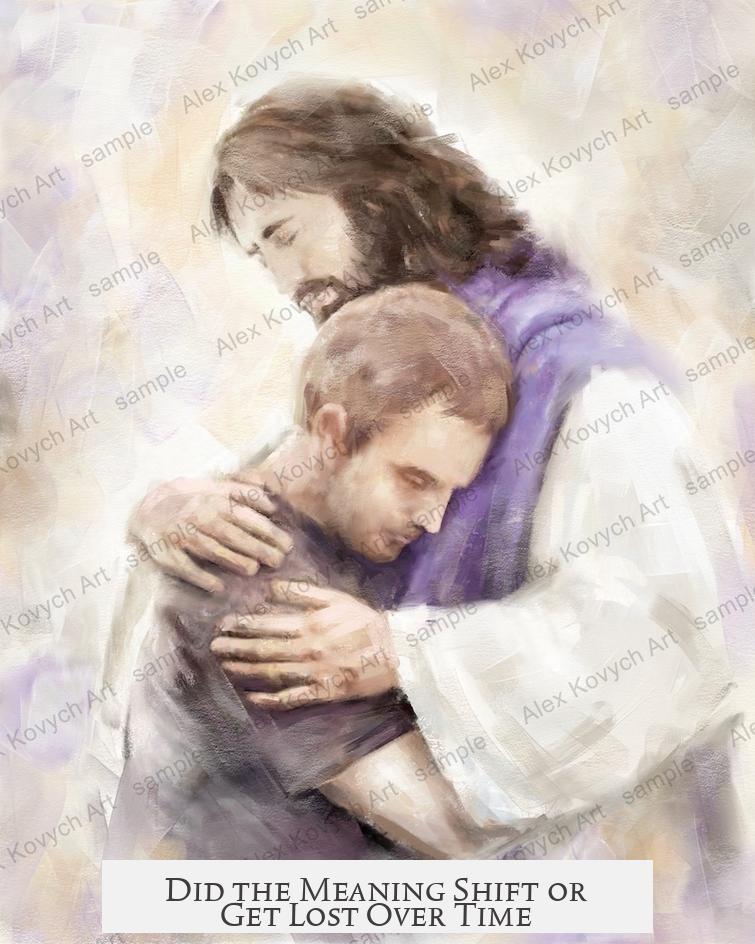
Here’s where things get interesting. Over centuries, the vivid significance of the white robe and red sash has sometimes blurred into mere tradition or decorative choice. Many modern depictions of Jesus focus more on style than on symbolism, turning those meaningful colors into default costume options rather than powerful signs.
However, if you dig beneath the surface, the original meanings remain alive. Churches, theologians, and artists looking to connect deeply with scripture often highlight these colors to remind us of Jesus’s purity and sacrifice.
So no, the meaning hasn’t been lost; rather, it’s often unseen—waiting for curious minds to rediscover and appreciate its depth.
Practical Tips for Spotting Symbolism in Religious Art
- Whenever you see Jesus in portraits or stained glass wearing white or red, pause and ask: is the artist pointing to his purity and heavenly nature (white), or his sacrifice and kingly authority (red)?
- Look for scriptural references or sermons accompanying the artwork—it often explains the color choices.
- Remember that in older art, color dye had social and economic significance—red meant wealth and power, making Jesus’s depiction as a bleeding king even more striking.
Next time you encounter that classic image—Jesus radiant in white with a bold splash of red—remember you’re seeing a timeless story packed into fabric and color. It’s a story of light piercing darkness, of sacrifice forging salvation, and of a king who reigns not by might but by love.
Have you ever noticed these colors in church art or movies and wondered why? Does knowing their deep roots change how you see that image? Sometimes, a closer look reveals that even the simplest robe or sash carries a universe of meaning.
